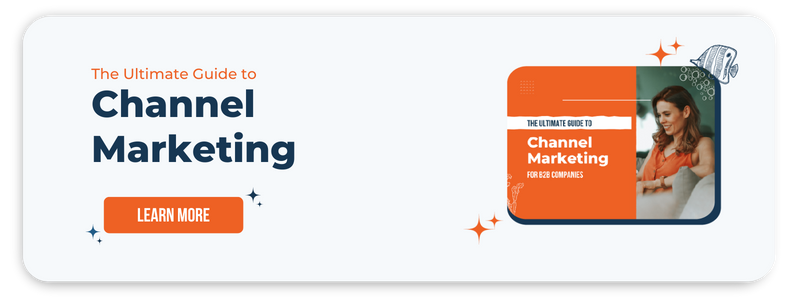
Channel enablement gives you the ability to manage, measure, and maintain a consistent and scalable channel marketing strategy and measurable indirect sales approach to product distribution.
What is Channel Enablement?
Before we define channel enablement, it's important to understand sales enablement. Sales enablement is the process of bringing your internal sales and marketing teams together, allowing them to act as something more powerful as a collective than either one of them could be on their own. The benefit of this is that you get to increase sales by improving the processes of qualifying leads, as well as how those leads are handled off to sales.
Channel enablement is similar in concept to sales enablement, but its focus is on improving the level of expertise and buy-in from your partner's indirect sales individuals to then pitch your brand's offers. In effect, channel enablement is sales enablement, but for your partner's sales teams rather than your own.
By making a meaningful effort to improve the content, the processes, and the tools you're offering to these partners, they're in a much better position to sell more of your products to end users in a more effective way.
Why Channel Enablement is Important
Most building materials manufacturers make the mistake of thinking that by supplying partners with re-designed product spec sheets, they're taking care of their needs in terms of "channel enablement." In reality, what they are really missing are those critical components of engaging with and growing their partners' businesses alongside their own.
That's really what it's all about—seeing them less as the manufacturer's customer, and more as the conduit to the actual product customer. Reframing this initial concept is step one towards recognizing your distributors as legitimate partners in every sense of the term. When one of you succeeds, you all succeed.
All of this is so important because channel partners are a critical source of revenue for any manufacturer. It's essential to offer the resources, the training, and the tools necessary for partners to create a consistent buyer's journey for your end users. By making sure that all of your partners can independently begin and complete the sales process, and by guaranteeing they have what they need to support the customers, you're helping them help you—by driving up revenue at the exact same time as you're improvement partner engagement and marketing ROI.
Examples of Channel Enablement Strategies
As you work to implement your own channel enablement strategies, there are a few key techniques you'll want to leverage where appropriate:
Partner Deal Registration & Tracking

By simply implementing technologies like automated lead routing, you're always making sure that the right leads are getting to the right channel partners at exactly the right time. Not only does this save a great deal of time and energy because you no longer have to perform these tasks manually (or even not at all), but it also helps close deals more effectively by getting leads to the partners who are the best fit to serve them. Leads can be routed based on geographic proximity, product type, quantity needs, or any other qualification that you actively track and can sort by.
Similarly to you tracking the leads you route to partners, you need to implement a partner deal registration system, whether via ManoByte's custom built HubSpot partner deal registration CRM add-on or by implementing a full PRM.
Timely Lead Time Communication
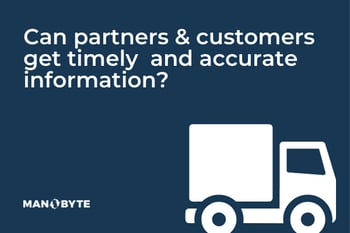 If distributors and dealers don't know when they can expect their next shipment from you for out of stock inventory, partners cannot give their customers accurate information. Similarly, end users waiting for orders and scheduling installers around expected delivery need the delivery information you provide to be truth and not merely approximate.
If distributors and dealers don't know when they can expect their next shipment from you for out of stock inventory, partners cannot give their customers accurate information. Similarly, end users waiting for orders and scheduling installers around expected delivery need the delivery information you provide to be truth and not merely approximate.
When equipped with accurate lead time information, partners and end user customers alike can make complete purchasing decisions without guessing or just going with the next available option that is a sure deal. The great news is you don't have to wait for or pay for a full PRM implementation to achieve this channel enablement tactic. You can generate better sales results in just 4-6 weeks with just lead time communication implementation.
Market Development Funds
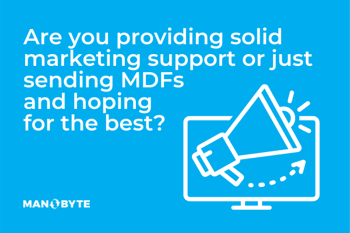 Also called MDFs, these are the funds that a manufacturer will offer to its sales partners to help them market their products at a local level. This could include funds that will be used for print or digital advertising campaigns; used for content creation, website optimization, and inbound marketing services; used for participation in conferences and trade shows and more. It can even support the development of specialized sales tools.
Also called MDFs, these are the funds that a manufacturer will offer to its sales partners to help them market their products at a local level. This could include funds that will be used for print or digital advertising campaigns; used for content creation, website optimization, and inbound marketing services; used for participation in conferences and trade shows and more. It can even support the development of specialized sales tools.
This is particularly important because according to one recent study, about 84% of channel partners indicated that they did not have their own dedicated marketing resource. This means that you providing marketing support well beyond just handing them money would go a long way towards enabling your channel.
Content Syndication
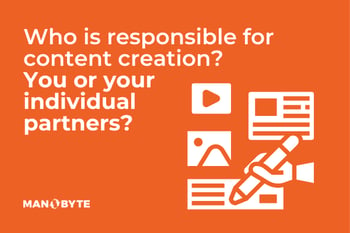 This is a technique within your overall channel marketing strategy that sees to it that all of those helpful blog posts, videos and other types of digital content essentially re-posted and re-distributed by your channel partners. Not only is this a great way to increase the number of leads they're able to generate, but it also helps expose your consistent messaging across your entire channel as well. Be mindful to properly implement Canonical Tags when deploying a content syndication strategy, however, to prevent negative SEO impacts.
This is a technique within your overall channel marketing strategy that sees to it that all of those helpful blog posts, videos and other types of digital content essentially re-posted and re-distributed by your channel partners. Not only is this a great way to increase the number of leads they're able to generate, but it also helps expose your consistent messaging across your entire channel as well. Be mindful to properly implement Canonical Tags when deploying a content syndication strategy, however, to prevent negative SEO impacts.
Campaign-in-a-Box Library
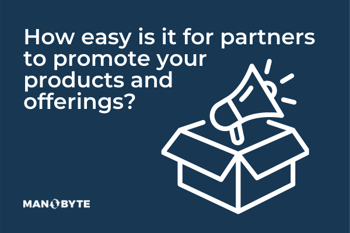 These are all-in-one marketing resources that can be leveraged by channel partners who may not have their own marketing teams, nor the resources required to put one together. Campaigns-in-a-box could involve offering your channel partners posts that are ready for publication on social media sites like Facebook or LinkedIn. You could even provide them with email copy and lead nurture workflows so they can start selling immediately.
These are all-in-one marketing resources that can be leveraged by channel partners who may not have their own marketing teams, nor the resources required to put one together. Campaigns-in-a-box could involve offering your channel partners posts that are ready for publication on social media sites like Facebook or LinkedIn. You could even provide them with email copy and lead nurture workflows so they can start selling immediately.
Co-Branded Landing Pages
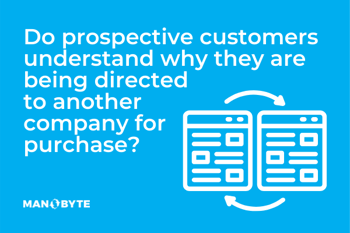 A co-branded landing page is designed to give your channel partners a place to refer traffic to. They're meant to make the transition for visitors from your channel partner's site to your site easier, all while highlighting your partnership. In addition to making visitors feel confident and increasing your own website's domain authority, this also allows you to strengthen that relationship you're building with your channel partners as well. This is another important point to consider, as one recent study indicated that about 55% of channel partners indicated that a lack of co-branded content posed a significant challenge to their sales ability.
A co-branded landing page is designed to give your channel partners a place to refer traffic to. They're meant to make the transition for visitors from your channel partner's site to your site easier, all while highlighting your partnership. In addition to making visitors feel confident and increasing your own website's domain authority, this also allows you to strengthen that relationship you're building with your channel partners as well. This is another important point to consider, as one recent study indicated that about 55% of channel partners indicated that a lack of co-branded content posed a significant challenge to their sales ability.
Product Specifications & Offerings Communication
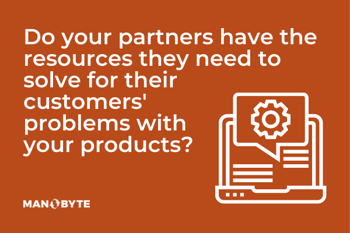 Usually, this is in the form of a PRM or Partner Portal. The goal here is to make sure that all of your channel partners have a common understanding about your products and services.
Usually, this is in the form of a PRM or Partner Portal. The goal here is to make sure that all of your channel partners have a common understanding about your products and services.
This helps eliminate as much potential confusion as possible during the sales process, all while making sure that only the highest standards are being maintained.
Implementing Channel Enablement for Building Materials Sales
Not all channel enablement strategies are right for every partner. Selecting the right channel enablement strategies for the right partners brings with it a variety of different benefits. Some partners do have a solid content marketing program of their own while others do not—thus the value of content syndicated for the latter (and you) is higher than for the former.
Channel enablement also allows you to gain consistency across all partners - allowing you to maximize the return on investment of your marketing assets as well. In the end, remember that the principle of reciprocity absolutely applies when it comes to channel enablement. When you support and enable your indirect sales representatives, they inevitably return the favor by pitching your products more enthusiastically when asking for a sale. That creates a mutually beneficial situation for everyone involved. Learn more about how to improve the ROI from your channel marketing efforts by downloading the Ultimate Guide to Channel Marketing for Building Materials Manufacturers below:
Ready to Dive In?
Work with our team of HubSpot experts and watch us take clunky systems, tech stacks, websites, and portals and turn them into tailored, intelligent workflows that deliver business outcomes.

